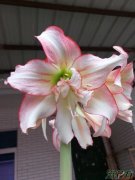When will Lijinhua collect the ball starting in late April
Lijinhua is a relatively niche flower and grass, so it’s not easy for flower friends to find relevant information. For example, some flower friends ask when Lijinhua will collect the balls. Generally speaking, they can start collecting around late April.After pilling, put the ball in a cool and ventilated place to dry for a period of time. After the root system has almost shrunk, you can cut off most of it, taking care not to damage the root disc. Then wrap the ball with a napkin and put it in a gauze bag or paper bag Breathability is very important, store in a cool and ventilated place.
Do not store Lijinhua spheres in the refrigerator. It is a small bulb from South Africa and does not require vernalization. It can be stored at normal temperature.
I'm talking about when Lijinhua will be planted
Because Lijinhua is afraid of hot and humid environment, we can postpone the time of planting Lijinhua a little later, about mid-October. Of course, the climate difference between the north and the south is very big, and the north can be properly advancedOne point, this doesn’t matter, we just need to make a flexible decision based on the local climate.
In general, you can see flower friends after planting Lijinhua for 2 months. Its flowering period is about November to April of the following year. Depending on the planting time, this flowering period is different.
We continue to extend to Lijinhua's post-flower management
After the flowering period of Lijinhua is over, cut off the flower head and leave the flower stem. The residual flower is cut off to avoid wasting nutrition on the seeding, if the flower friend wants to play sowingReproductionOr hybridization, you can leave residual flowers for seeding. The flower stems are left to allow the nutrition of the flower stems to flow back to the bulbs to strengthen the bulbs. From then on, the top dressing is changed to potash fertilizer and strong bulbs until the bulbs are harvested basically bulbous rootsPlants are treated like this, of course likeHyacinthExcept for those who are unwilling to raise the second year.
- Related knowledge
- Editor's recommendation
- The breeding method of hyacinth picture and text teach by hand
- The breeding method of hyacinth
- How to deal with lily after blooming
- Causes of yellowing of cyclamen leaves
- Comparison of hyacinth and grape hyacinth
- Introduction of lily varieties
- Post-flower management of Zhu Dinghong
- The cultivation method of gladiolus gladiolus
- Problems and misunderstandings of hyacinth clip arrows
- Control the five elements of fragrant snow orchid freesia


